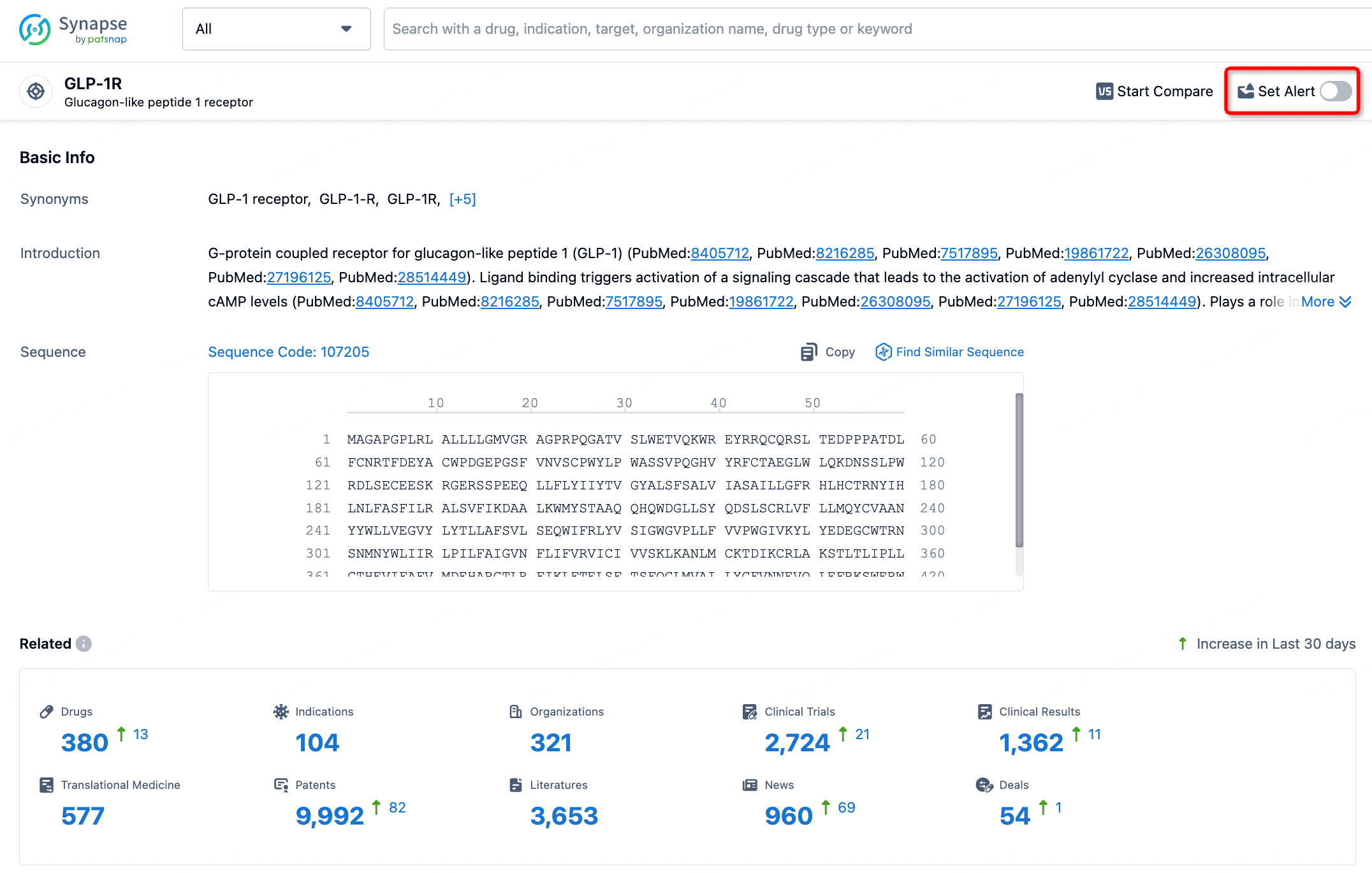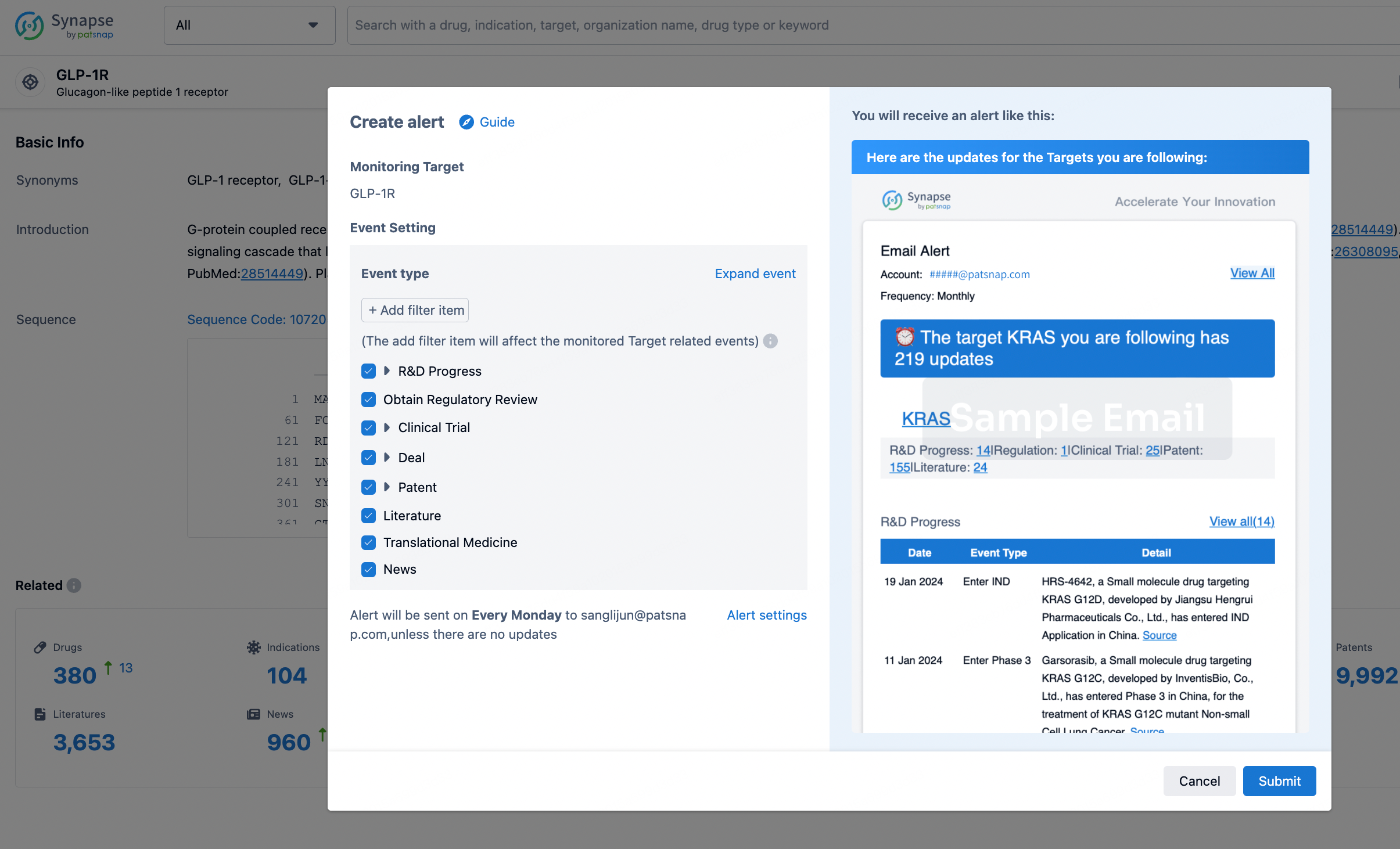Request Demo
What are EEF2 gene inhibitors and how do they work?
26 June 2024
The EEF2 (eukaryotic elongation factor 2) gene plays a crucial role in the elongation phase of protein synthesis. It is responsible for the translocation step during translation, where the ribosome moves along the mRNA to allow the incorporation of amino acids into a growing polypeptide chain. Given its central role in protein biosynthesis, the EEF2 gene has become a significant target for therapeutic interventions, especially in the realm of cancer treatment. In this blog post, we will explore how EEF2 gene inhibitors work, their mechanisms, and their current and potential uses.
EEF2 gene inhibitors work by interfering with the function of the eukaryotic elongation factor 2 protein, which is essential for the translocation of the ribosome along the mRNA during protein synthesis. The inhibitors typically bind to EEF2, preventing it from interacting with the ribosome. This disruption halts the elongation process, leading to a cessation of protein synthesis. Given that protein synthesis is vital for cell growth and survival, inhibiting EEF2 can have a profound impact on rapidly dividing cells, such as cancer cells.
One of the primary mechanisms through which EEF2 inhibitors exert their effects is by blocking the exchange of GDP for GTP on the EEF2 protein. Normally, EEF2 undergoes a cycle of binding and hydrolyzing GTP to GDP, which provides the energy required for ribosomal translocation. By preventing this exchange, EEF2 inhibitors effectively "freeze" the protein in an inactive state, thereby stalling the translation machinery. This action can lead to the accumulation of defective or unfinished proteins within the cell, triggering stress responses that may result in cell death.
Another mechanism involves the phosphorylation of EEF2 by specific kinases such as eEF-2 kinase (eEF2K). Phosphorylation of EEF2 inhibits its activity, and certain EEF2 inhibitors can enhance this phosphorylation process, thereby amplifying their inhibitory effects. Additionally, some inhibitors may target upstream signaling pathways that regulate EEF2 activity, offering a multi-faceted approach to disrupting protein synthesis.
EEF2 gene inhibitors have garnered significant attention in oncology, given their potential to selectively target cancer cells. Rapidly proliferating cancer cells have an elevated demand for protein synthesis, making them particularly vulnerable to disruptions in this process. By inhibiting EEF2, these drugs can effectively starve cancer cells of the proteins they need for growth and survival, leading to cell death or reduced tumor growth. Several preclinical and clinical studies have demonstrated the efficacy of EEF2 inhibitors in various types of cancer, including lung, breast, and pancreatic cancers.
Beyond oncology, EEF2 inhibitors are being explored for their potential in treating other diseases characterized by aberrant protein synthesis. For instance, certain neurodegenerative diseases, such as Alzheimer's and Parkinson's, are associated with the accumulation of misfolded proteins. EEF2 inhibitors could theoretically reduce the production of these harmful proteins, thereby alleviating symptoms or slowing disease progression. However, this area of research is still in its infancy, and more studies are needed to fully understand the therapeutic potential and safety of EEF2 inhibitors in these contexts.
There is also interest in using EEF2 inhibitors as tools for scientific research. By selectively inhibiting protein synthesis, researchers can study the effects of reduced protein production on cellular processes, providing insights into the fundamental biology of cell growth and maintenance. This can help identify new therapeutic targets and deepen our understanding of various diseases.
In summary, EEF2 gene inhibitors represent a promising class of therapeutics with broad potential applications, particularly in the treatment of cancer. By disrupting the critical process of protein synthesis, these inhibitors can effectively target rapidly dividing cells, offering a novel approach to disease management. As research continues to advance, we may see EEF2 inhibitors being applied to a wider range of medical conditions, highlighting their versatility and importance in modern medicine.
EEF2 gene inhibitors work by interfering with the function of the eukaryotic elongation factor 2 protein, which is essential for the translocation of the ribosome along the mRNA during protein synthesis. The inhibitors typically bind to EEF2, preventing it from interacting with the ribosome. This disruption halts the elongation process, leading to a cessation of protein synthesis. Given that protein synthesis is vital for cell growth and survival, inhibiting EEF2 can have a profound impact on rapidly dividing cells, such as cancer cells.
One of the primary mechanisms through which EEF2 inhibitors exert their effects is by blocking the exchange of GDP for GTP on the EEF2 protein. Normally, EEF2 undergoes a cycle of binding and hydrolyzing GTP to GDP, which provides the energy required for ribosomal translocation. By preventing this exchange, EEF2 inhibitors effectively "freeze" the protein in an inactive state, thereby stalling the translation machinery. This action can lead to the accumulation of defective or unfinished proteins within the cell, triggering stress responses that may result in cell death.
Another mechanism involves the phosphorylation of EEF2 by specific kinases such as eEF-2 kinase (eEF2K). Phosphorylation of EEF2 inhibits its activity, and certain EEF2 inhibitors can enhance this phosphorylation process, thereby amplifying their inhibitory effects. Additionally, some inhibitors may target upstream signaling pathways that regulate EEF2 activity, offering a multi-faceted approach to disrupting protein synthesis.
EEF2 gene inhibitors have garnered significant attention in oncology, given their potential to selectively target cancer cells. Rapidly proliferating cancer cells have an elevated demand for protein synthesis, making them particularly vulnerable to disruptions in this process. By inhibiting EEF2, these drugs can effectively starve cancer cells of the proteins they need for growth and survival, leading to cell death or reduced tumor growth. Several preclinical and clinical studies have demonstrated the efficacy of EEF2 inhibitors in various types of cancer, including lung, breast, and pancreatic cancers.
Beyond oncology, EEF2 inhibitors are being explored for their potential in treating other diseases characterized by aberrant protein synthesis. For instance, certain neurodegenerative diseases, such as Alzheimer's and Parkinson's, are associated with the accumulation of misfolded proteins. EEF2 inhibitors could theoretically reduce the production of these harmful proteins, thereby alleviating symptoms or slowing disease progression. However, this area of research is still in its infancy, and more studies are needed to fully understand the therapeutic potential and safety of EEF2 inhibitors in these contexts.
There is also interest in using EEF2 inhibitors as tools for scientific research. By selectively inhibiting protein synthesis, researchers can study the effects of reduced protein production on cellular processes, providing insights into the fundamental biology of cell growth and maintenance. This can help identify new therapeutic targets and deepen our understanding of various diseases.
In summary, EEF2 gene inhibitors represent a promising class of therapeutics with broad potential applications, particularly in the treatment of cancer. By disrupting the critical process of protein synthesis, these inhibitors can effectively target rapidly dividing cells, offering a novel approach to disease management. As research continues to advance, we may see EEF2 inhibitors being applied to a wider range of medical conditions, highlighting their versatility and importance in modern medicine.
How to obtain the latest development progress of all targets?
In the Synapse database, you can stay updated on the latest research and development advances of all targets. This service is accessible anytime and anywhere, with updates available daily or weekly. Use the "Set Alert" function to stay informed. Click on the image below to embark on a brand new journey of drug discovery!
AI Agents Built for Biopharma Breakthroughs
Accelerate discovery. Empower decisions. Transform outcomes.
Get started for free today!
Accelerate Strategic R&D decision making with Synapse, PatSnap’s AI-powered Connected Innovation Intelligence Platform Built for Life Sciences Professionals.
Start your data trial now!
Synapse data is also accessible to external entities via APIs or data packages. Empower better decisions with the latest in pharmaceutical intelligence.


